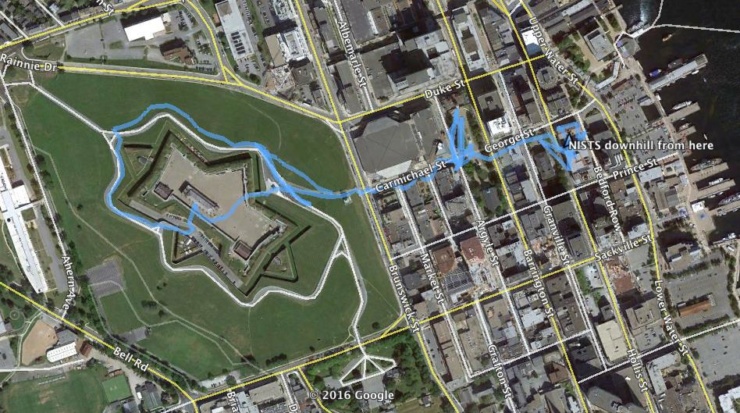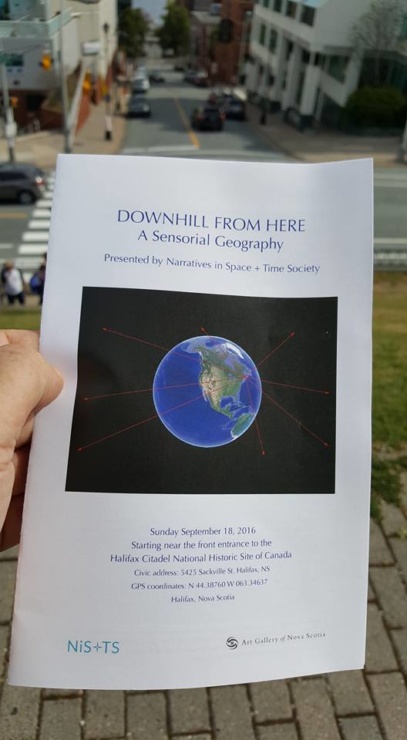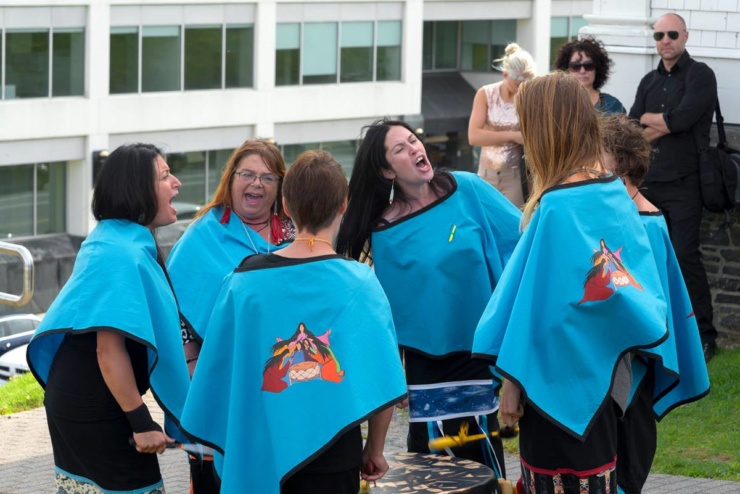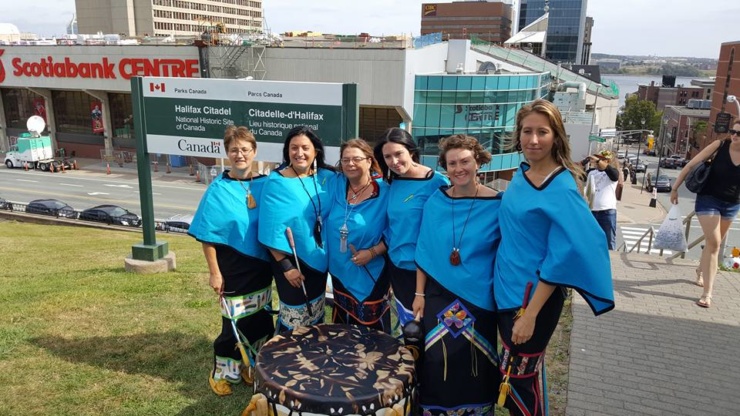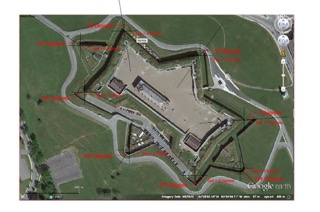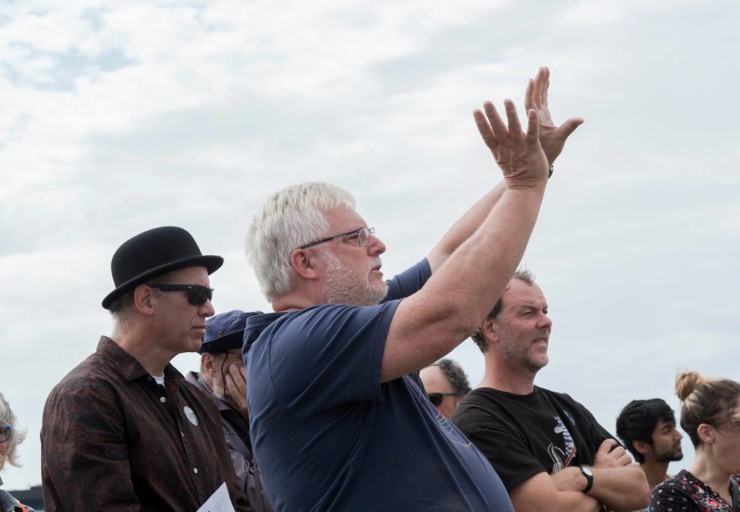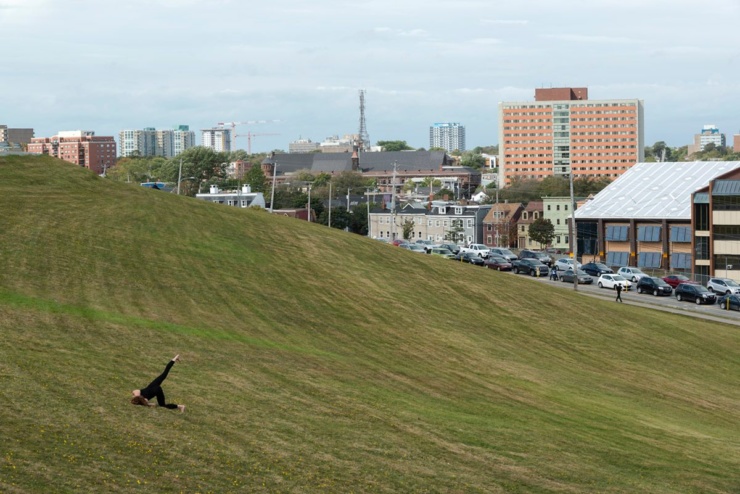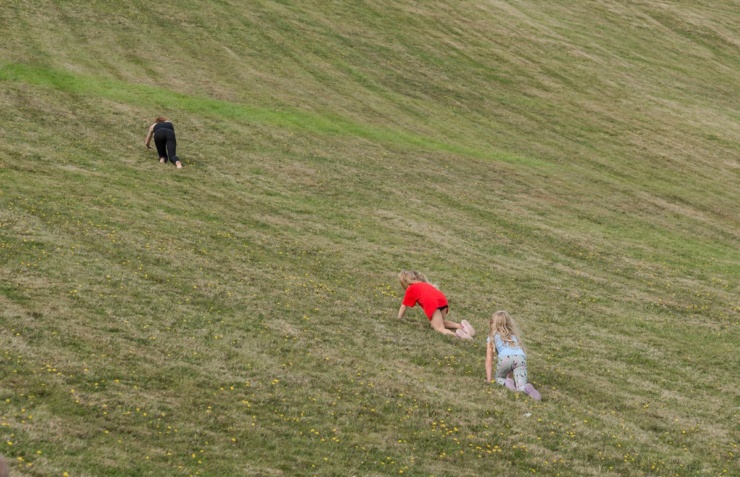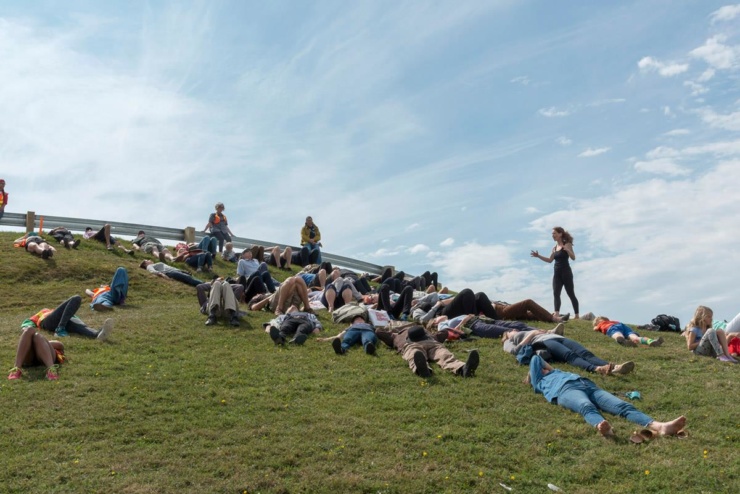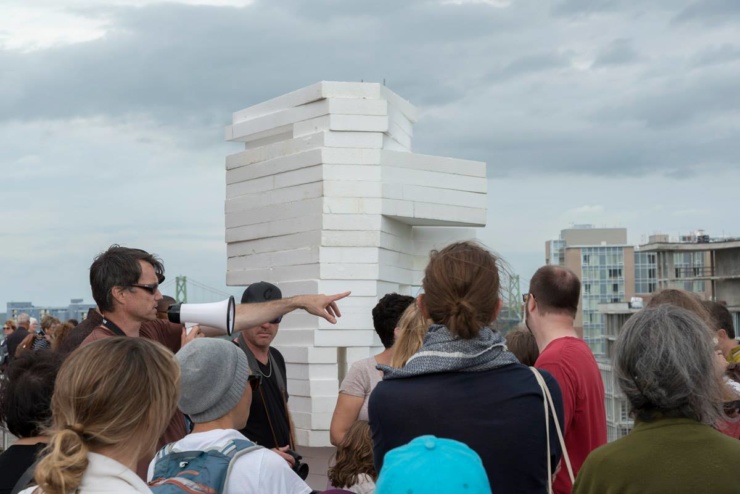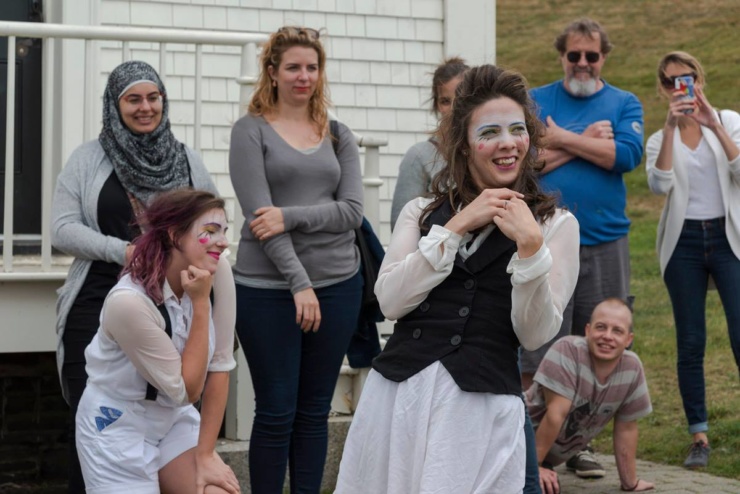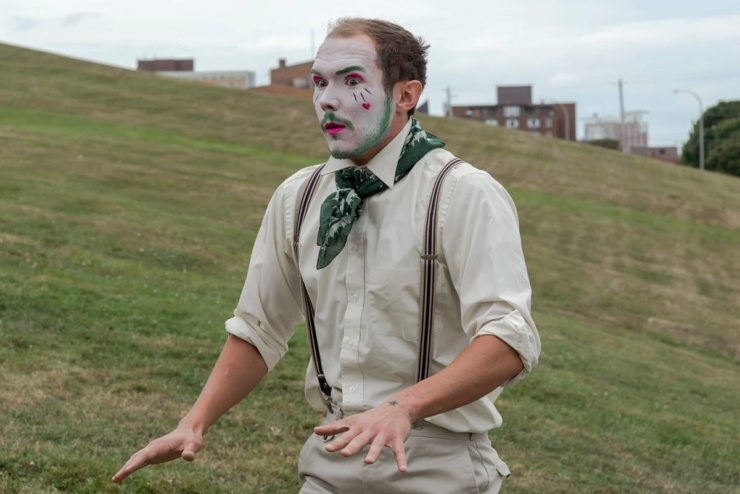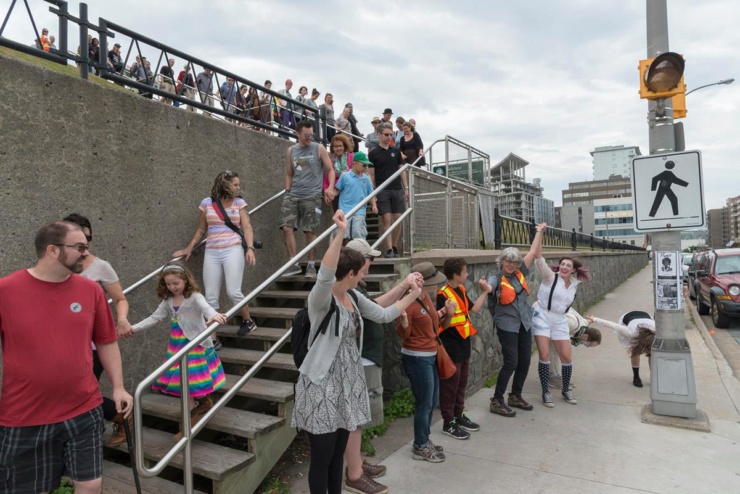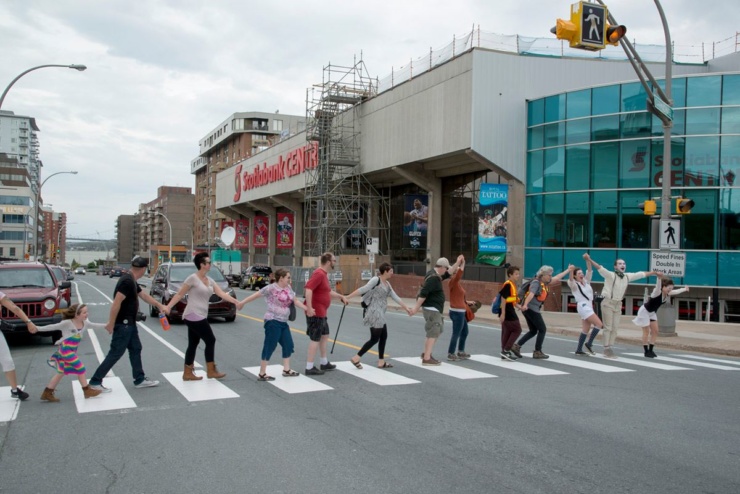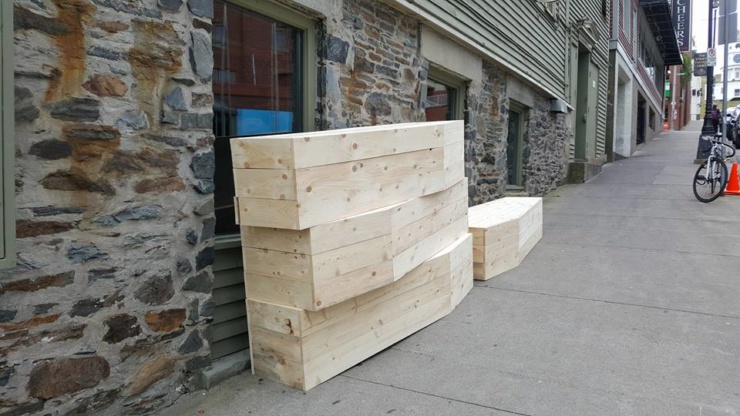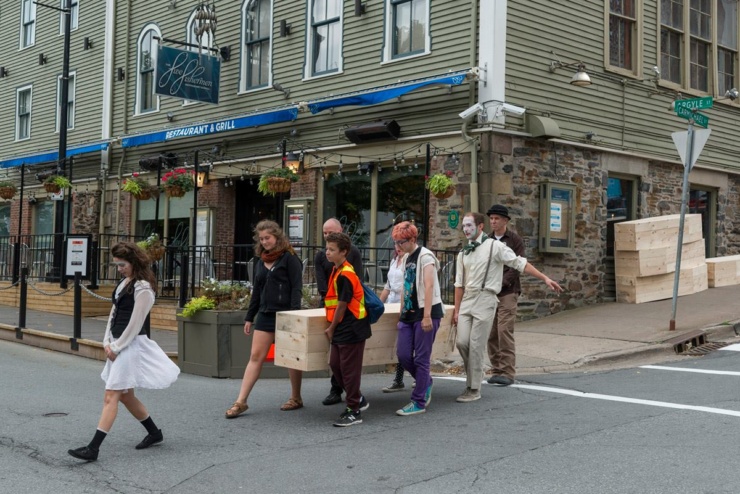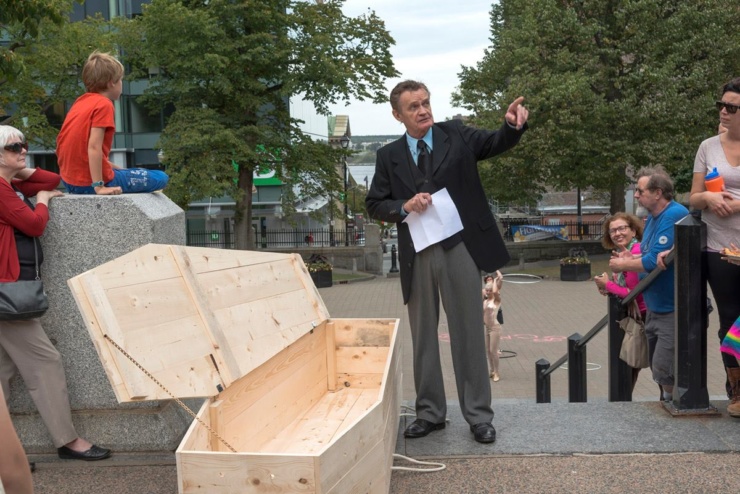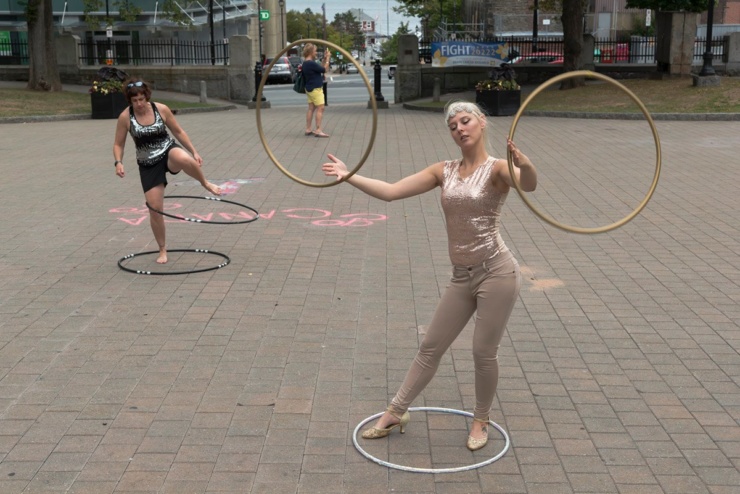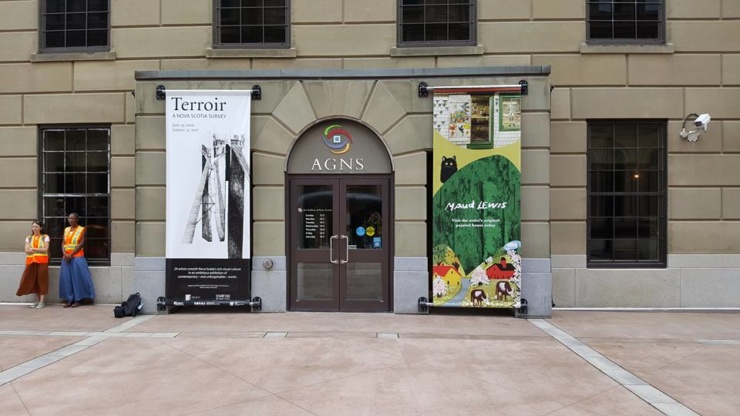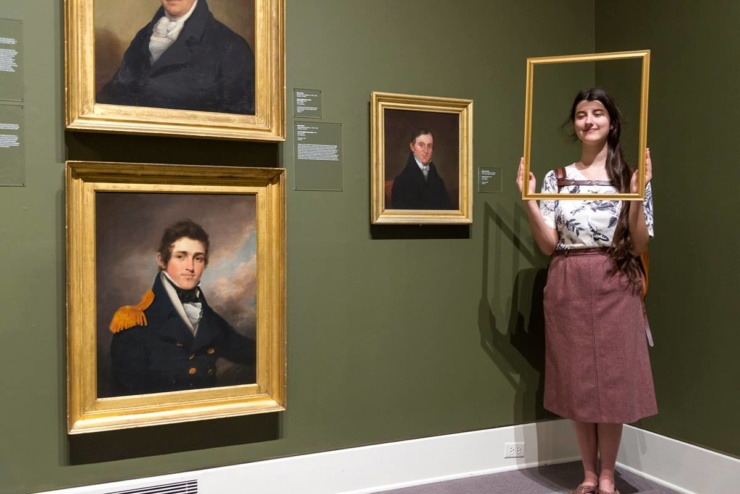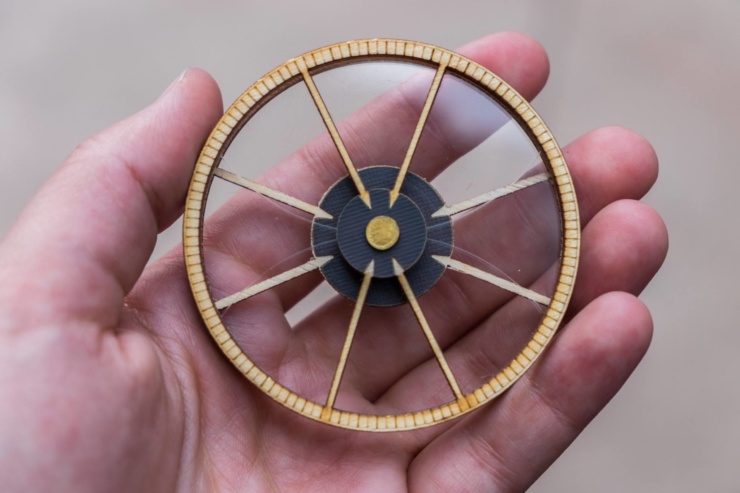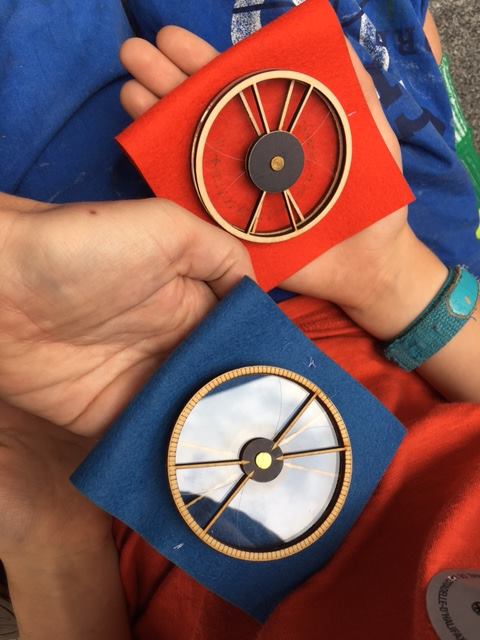“Downhill from Here” was a Narratives in Space + Time Society public art walk held on September 18, 2016, commissioned by the Art Gallery of Nova Scotia to relate to its exhibition Terroir: A Nova Scotia Retrospective. The exhibition, which ran from June 2016 to January 2017, considered “regional artistic expression through the culture from which it emerges.”
The many artists and collaborators involved in the “Downhill from Here” event were from a broad field of expertise and interest, including cosmology, astronomy, the extensive history of African Nova Scotians, storytelling in several traditions, the state of arts and culture in the province, somatic movement, and the geography of the region. “Downhill from Here” began on Citadel Hill with an opening by Women of the Shore, and concluded at the Gallery itself, with a consideration of the works in the retrospective show.
Astronomer Dave Chapman collaborated with NiS+TS for this event, giving a presentation on the celestial occurrences of the day from the top of Citadel Hill. Chapman described the current positions of celestial bodies, also relating their significance to Mi’kmaw and European astronomy traditions. Walkers were then led through the Citadel’s interior courtyard, where Chapman’s astronomer colleagues were set up with telescopes. Chapman prepared this report for NiS+TS: Report for NiS+TS “Narratives in Space + Time Society” on observing circumstances for the Halifax Citadel in connection with the Downhill From Here public art walk
Seated on the hillside and looking out to the north, with walk participants gathered around her, storyteller and writer Shauntay Grant gave a captivating rendition of the stories and experiences of African Nova Scotians.
Walking was not the only form of movement experienced by participants. NiS+TS collaborator and dance artist Sally Morgan led the group into other forms of embodied experience, such as crawling. Morgan encouraged participants to lie flat on their backs on the soft grass and focus on being in their bodies, facing towards and feeling the blue sky’s depths.
NiS+TS was thrilled to partner with Common Roots Urban Farm for this event. Common Roots farm coordinator Jayme Melrose presented a talk on the farm and its relationships with the community.
Dalhousie University School of Architecture professor James Forren spoke on the subject of sightlines and view plane bylaws from Citadel Hill, citing these quotations in his talk, giving a clear picture of the contentiousness of the issue:
‘The defenders of the Hill were not the British soldiers that had garrisoned the fortress for a century and a half but citizens, young and old, who spoke out for the protection of the City’s vantage point and sweeping view of the harbour.’
– Elizabeth Pacey, The Battle for Citadel Hill, 1979‘I have always disliked these viewplane bylaws and would like to see them scrapped as well as the overly restrictive height limits in the HRM by Design.’
– fenwick16, skyscraperpage.com, 2010‘Africville’s absence from discussions concerning heritage in the central city is not due to the two issues being unrelated, but rather speaks to a long history of exclusion and marginalisation upon which the city, as a colonial, military space, depended.’
– Lachlan B. Barber, “Making Meaning of Heritage Landscapes,” 2013
On the hill by the town clock, walkers were entertained by the clowning antics of Tea Time performers, who led the group downhill from the Citadel towards downtown, with youth group Future Roots also escorting.
Down by the Five Fishermen restaurant, walkers found a recreation of a photo taken in the aftermath of the Halifax Explosion. It was an ominous scene with coffins stacked alongside the building’s stone wall. Volunteer pallbearers carried one coffin down to the top of the Grand Parade; to the participants’ surprise, the coffin opened and out emerged a returned Arthur Lismer (as played by actor Brian Downey). Lismer, at the time of the Explosion, was the principal of the Victoria School of Art and Design (the institution that was later to become NSCAD University). Standing beside his coffin, Lismer offered a critique of the contemporary urban developments of 21st century Halifax’s downtown.
Below Lismer’s perch and along the way to the AGNS, walkers stopped to watch Halifax City Hoopers performing in the Grand Parade. The walk then concluded with a walkthrough of the Terroir exhibition at the AGNS, with volunteer NSCAD students encouraging participants to view the artworks differently.
Outside for the finale, participants enjoyed delicious roast vegetables and herbs courtesy of Common Roots Urban Farm’s gardeners and farmers. In addition to this delicious post-walk meal, walkers were also given keepsakes in the form of special compasses exquisitely designed by artist Angela Henderson.
For more information on the walk, please view this pamphlet provided to participants at the start of the walk: “Downhill From Here: A Sensorial Geography”.
